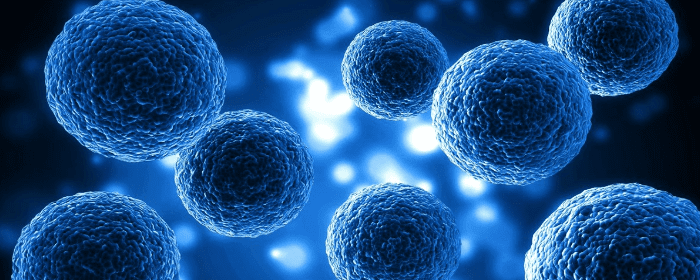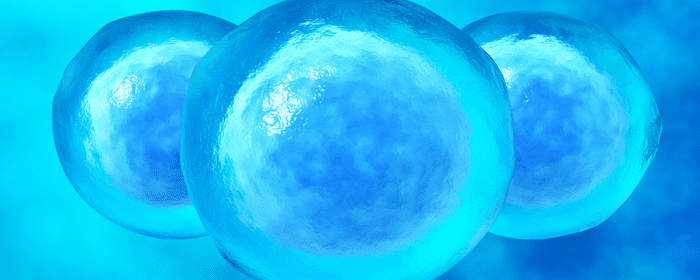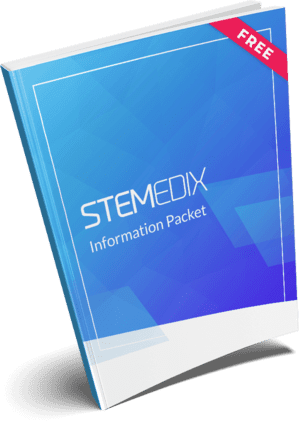
by admin | Mar 7, 2024 | Spinal Cord Injury, Mesenchymal Stem Cells, Stem Cell Research, Stem Cell Therapy
Spinal cord injuries (SCI) are the most serious complication associated with spinal injuries and often result in permanent damage to the nervous system. With nearly 300,000 people in the United States living with SCI, the inability to treat these injuries has a significant impact on physical, mental, and financial health.
Additionally, while 94% of those suffering acute traumatic SCI survive initial treatment for the condition, both long-term survival and quality of life are often reduced as a result of post-injury complications. Further complicating the issue is the fact that the current standard of SCI treatment is designed only to reduce the secondary effects of injury and not directly promote healing through neuroregeneration.
Considering that mesenchymal stem cells (MSCs) are known to have anti-inflammatory properties, promote vascular regeneration, and to release neuro-nutrients, they are becoming increasingly promising as a potential treatment for SCI.
In this article, Xia et al. examine the evidence of pathophysiological changes occurring after SCI, review the underlying mechanisms of MSCs, summarize the potential application of MSCs in clinical practice, and highlight the challenges surrounding the use of MSCs in the treatment of SCI in future applications.
The goal of any SCI therapeutic treatment option is to promote rapid recovery of neurological function through a combination of medical and surgical interventions. However, to date, there are no optimal treatment strategies that allow for this goal to be met.
MSCs’ multidirectional differentiation capabilities are highly viable and known to provide structural support in SCI. In terms of using MSCs in the treatment of SCI, and specifically for their role as an anti-inflammatory agent, the most attractive aspect is their unique immunomodulatory ability.
Additionally, the goal of treatment after SCI is to repair the damaged nerve cells and restore nerve function. Studies exploring differentiation of MSCs after SCI have demonstrated spontaneously expressed neuromarkers at SCI sites and have allowed for recovery of neurological function.
The authors point out that traumatic SCI usually results in the direct destruction of blood vessels around the spinal cord which often results in ischemic necrosis and secondary injuries. Since promoting vascular recovery contributes to the recovery of motor function in patients with SCI, SCI vascular recovery is a new target for the treatment of SCI. Several studies have observed that MSCs secrete angiogenic factors that promote pericyte recruitment, a critical step in vascular maturation. The authors also report recent findings indicating that 57% of the vascular endothelial cells around the SCI of a mouse showed vascular regeneration effects after receiving MSC-EVs with an extensive vascular network formed around the injury over a period of 28 days.
Although MSCs are beneficial to the recovery of neurological function in patients with SCI, the authors call for additional research to focus on better understanding the SCI cellular mechanisms and MSC action for use in clinical practice. Additionally, Xia et al. point out that the survival rate and long-term survival of MSCs in the SCI microenvironment remain an unresolved issue.
MSCs repair SCI through anti-inflammatory effects and by promoting nerve axon regeneration and vascular regeneration. While further research is required to fully understand the mechanism underlying the effect of MSCs, the authors conclude the role of MSCs in treating SCI has been demonstrated in several clinical trials.
Source: “Mesenchymal stem cells in the treatment of spinal cord injury.”
https://www.frontiersin.org/articles/10.3389/fimmu.2023.1141601/full.

by Stemedix | Mar 4, 2024 | Erectile Dysfunction, Heart Failure, Regenerative Medicine, Stem Cell Research, Stem Cell Therapy
Lots of symptoms and signs can warn you that you may be at risk of suffering from heart disease, but did you know erectile dysfunction is one of them? Learn more about the connection between cardiovascular issues and erectile dysfunction — and what treatment options you may have.
Understanding How Erections Form
To understand how erectile dysfunction may be a sign of heart disease, it’s first necessary to know how an erection forms.
Erections don’t just depend on the correct functioning of the genitals. Instead, the process relies on a complex set of interactions between your hormones, brain, blood vessels, and muscles throughout the body.
The moment there’s a mental or physical stimulus, the process begins. When you’re aroused, your brain uses your blood vessels and nerves to send signals to the rest of your body. These signals stimulate blood to flow to the penis, letting the erectile chamber expand.
Testosterone levels also play a role since it functions as a vasodilator, opening up your blood vessels.
If there’s any kind of issue in any of these steps, it can result in erection problems. That also includes if your heart isn’t strong enough to pump blood or if there’s plaque buildup in your blood vessels. If either of those things happens, your erectile chamber won’t expand.
Some of the most common signs of erectile dysfunction include:
- Being able to get an erection but not maintain it long enough for intercourse.
- Only sometimes being able to get an erection before intercourse.
- Requiring a lot of stimulation to get or maintain an erection.
- Complete inability to get an erection.
It can be normal to have trouble every once in a while, getting an erection, but if it starts occurring regularly, you should visit your doctor to understand what the problem is.
Heart Disease and Erectile Dysfunction: Shared Risk Factors
Heart disease and erectile dysfunction share common risk factors, which is why, many times, one of these issues can point to another.
Shared risk factors of these conditions include:
- Age
- Diabetes
- High blood pressure
- Non-active lifestyle
- Smoking
- High cholesterol
- Obesity
- Stress
If you have a family history of heart disease or erectile dysfunction, you are also more likely to develop the problem yourself because there are genetic factors at play.
Is Erectile Dysfunction a Heart Disease Warning Sign?
Erectile dysfunction isn’t always a sign of heart disease, but it often is. This is because of the heart’s function in the process of forming an erection.
If the arteries in the body are affected by atherosclerosis, which is when plaque builds and doesn’t allow as much blood to flow, this can lead to problems with blood flow to the penis. Atherosclerosis also increases your chances of having a heart attack.
Because the arteries in the penis are so narrow, erectile dysfunction can be the first sign of plaque buildup.
Another potential connection between erectile dysfunction and heart disease is endothelial dysfunction. This condition is when the blood vessels constrict instead of dilating, and it’s a type of non-obstructive coronary artery disease. Your arteries narrow even though there’s nothing blocking them.
Treating Erectile Dysfunction
If you struggle with erectile dysfunction, your healthcare provider might suggest a number of treatment options depending on the underlying cause of the problem.
If the problem is related to cardiovascular issues, including atherosclerosis, treatments can include lifestyle changes. This can mean becoming more active by adding cardiovascular exercises like walking, swimming, and jogging to your life. Always speak with your doctor before beginning any kind of exercise routine.
Quitting smoking is another step you can take, as is adjusting your diet. You should limit your intake of saturated fats so that you can start lowering your cholesterol levels.
You’ll want to avoid alcohol as well. Alcohol interferes with the messengers in the brain that tell the penis to fill with blood while also reducing the production of testosterone levels. Alcohol is also bad for your heart since it causes high blood pressure, putting more stress on the organ.
Some oral medications that increase blood flow to the penis aren’t a good choice if you also have some types of heart disease, so it’s important to ensure that your doctor identifies what’s causing the erectile dysfunction before prescribing medications.
An option that shows promising results is regenerative medicine. Regenerative medicine options like stem cell therapy provide the chance to treat the underlying cause of erectile dysfunction.
Stem cell therapy relies on stem cells, which have the ability to transform into many other kinds of cells, encouraging the growth of healthier blood vessels so that the penis can receive better blood flow.
One of the most important benefits stem cell therapies offers is that it doesn’t require an invasive procedure.
Another regenerative medicine treatment option is platelet-rich plasma (PRP) therapy. PRP therapy uses a sample of your blood that contains concentrated platelet levels and is full of growth factors.
A PRP injection stimulates blood flow and the growth of new and healthier blood vessels.
Getting Help for Erectile Dysfunction
Erectile dysfunction can impact your whole life, affecting your self-esteem and even warning you that there may be other health issues to consider. Turning to your healthcare provider is the best thing you can do to understand what the underlying cause of the problem is and whether it points to issues like cardiovascular disease.
For many men, dealing with erectile dysfunction, with or without heart disease issues, means making lifestyle changes and considering treatment options like regenerative medicine.
Because choices like PRP therapy and stem cell therapy provide the chance to get to the root problem without putting you at risk of side effects, as medication does, it could be the right choice for men who are struggling with both erectile dysfunction and heart problems.

by admin | Feb 29, 2024 | Psoriasis, Mesenchymal Stem Cells, Stem Cell Research, Stem Cell Therapy
Chronic skin inflammatory diseases, including atopic dermatitis (AD) and psoriasis, are considered uncontrolled responses to systemic inflammation.
Characterized by swelling, irritation, and rash chronic skin inflammatory disease, these common skin inflammatory diseases are estimated to affect 25% of the population, with AD and psoriasis being the most common form of the disease.
Recent methods used to treat AD and psoriasis have been based on inhibition, not regulation, of the condition. Over time, these methods of treatment can result in a number of side effects and drug resistance.
Considering that mesenchymal stem cells (MSCs) have been used to treat a number of immune diseases, Yang et al. believe they present as a promising treatment for chronic skin inflammatory disease. As part of this review, the authors discuss the therapeutic effects of MSCs on AD and psoriasis, provide clinical evaluation of the administration of MSCs, and present a comprehensive vision for the application of MSCs in future research and treatment.
AD and psoriasis are known to be systemic and immune-allergic inflammatory skin diseases caused primarily by the imbalance between pro- and anti-inflammatory factors. MSCs play a role in regeneration and immunomodulation and their function in skin lesions present in these conditions could provide important information about their biological function in the diseases.
Considering that inflammation related to both AD and psoriasis begins at the MSC level, a treatment designed to address abnormal MSCs can potentially improve the pathogenesis of these diseases. While this method appears promising, the authors point out that the therapeutic methods designed to treat lesions associated with MSCs have yet to be determined and treating skin inflammatory disease with these improved MSCs requires further clinical study.
The authors also highlight the potential benefit of preconditioning MCSs as a way to improve the immune regulation capacity in treating a range of immune diseases. Specifically, precondition MSCs have been shown to alleviate allergic inflammation in keratinocytes and reduce inflammation in the skin through the JAK-STAT pathway.
While the benefits associated with preconditioning MSCs for this purpose require further research, Yang et al. believe that preconditioning MSCs with inflammatory factors can more effectively treat skin inflammatory diseases.
In addition to showing the benefits of MSC therapy when treating AD and psoriasis, the authors of this review also point out some limitations associated with the application of MSCs. These limitations include the need for double-blind placebo-controlled studies to indicate the potential clinical application of MSCs in AD and psoriasis and issues with the production and cost of MSCs not being able to reach the standard (making it difficult to translate into clinical treatment).
Despite these limitations, the application of MSCs has shown to be more effective in treating AD and psoriasis than other options that are currently available.
Yang et al. conclude that the advancing technology for administering MSCs and their capability of regeneration, immunomodulation, and differentiation have made them a promising strategy for the treatment of skin inflammatory diseases. The authors also call for additional studies to further uncover the mechanisms of the therapeutic effects of MSCs in AD and psoriasis to help better define therapeutic strategies for treating these diseases.
Source: Yang J, Xiao M, Ma K, Li H, Ran M, Yang S, Yang Y, Fu X and Yang S (2023) Therapeutic effects of mesenchymal stem cells and their derivatives in common skin inflammatory diseases: Atopic dermatitis and psoriasis. Front. Immunol. 14:1092668. doi: 10.3389/fimmu.2023.1092668

by Stemedix | Feb 26, 2024 | Parkinson's Disease, Health Awareness, Neurodegenerative Diseases, Regenerative Medicine, Stem Cell Research, Stem Cell Therapy
Parkinson’s disease causes nervous system complications. If you know someone who has struggled with this disease, you know how debilitating it can be. Parkinson’s affects mood, memory, cognition, and movement.
Fortunately, science is always advancing, and experts are learning more about Parkinson’s disease. Here are seven ways to help prevent Parkinson’s disease that are backed by scientific research.
1. Do Cardio Regularly
Cardiovascular exercise is linked to many other health benefits, but one of the most notable is reduced risk of Parkinson’s disease. Aerobic exercise, even in mild forms like walking or jogging, boosts your brain health. This improves and protects your memory, concentration, mood, and cognitive abilities as you age.
Cardio has an anti-inflammatory effect on your entire body. This is significant because researchers believe that Parkinson’s is the result of excess inflammation, among other factors. By getting a moderate to high amount of aerobic exercise each week, you can help protect yourself from developing this debilitating disease.
2. Relieve Stress in Healthy Ways
Psychological stress can be just as harmful as physical stress. Between the demands of work, family life, social circles, and hobbies, many modern Americans are more stressed than ever before.
It’s essential to reduce stress to stay healthy throughout your lifetime. Chronic high stress levels can contribute to whole-body inflammation, which is a serious risk factor for Parkinson’s disease.
Stress also reduces the volume of brain matter in areas that control memory, cognition, and movement, which are all negatively affected by Parkinson’s disease. By regularly combating stress, you can protect your brain and reduce your chances of developing this problematic condition.
Some healthy forms of stress relief include:
- Exercise
- Journaling
- Meditation
- Yoga
- Self-care days
- Getting at least eight hours of sleep at night
- Spending time outdoors
- Engaging in hobbies
These activities help you stay well-adjusted and free of stress, which weighs down your mental and physical health over time. Consider making changes in your life that cut out large sources of stress whenever possible.
3. Fill Your Plate with Veggies
Most people know that vegetables are extremely healthy. If you struggle to get your daily servings of veggies in, this information might make you reconsider your habits.
Vegetables naturally contain antioxidants, which are anti-inflammatory compounds that protect against aging and tissue damage. Filling your plate with vegetables increases your intake of antioxidants, vitamins, and minerals. All of these micronutrients contribute to better brain health and anti-aging.
When it comes to Parkinson’s prevention, this is one of the most effective steps you can take. If taste is an issue, consider adding more flavors to your meals to offset the taste of vegetables. You can also add seasoning and heart-healthy oils to make vegetables taste better.
4. Avoid Pesticides and Other Harsh Chemicals
Modern agriculture has changed a lot as humanity has progressed past the hunter-gatherer days. This means that crop growers are using more chemical pesticides than ever before. The long-term effects of these chemicals on human health are overwhelmingly negative.
Some studies have linked higher rates of Parkinson’s disease with high exposure to pesticides in farmers. The harsh chemicals used in large-scale agriculture are designed to keep bugs away from crops, but they can harm your brain health in the process.
To avoid this problem, shop organic and local whenever possible. Be mindful that many organic products can still contain certain pesticides. It’s best to shop at your local farmer’s markets and small grocery stores rather than chains.
These steps will help you access high-quality produce without exposing yourself to harsh, damaging chemicals.
5. Increase Your Vitamin D Intake
Vitamin D is incredibly important for immunity, mood, bone health, and brain health. Research has shown strong connections between Parkinson’s disease and low vitamin D levels. Now more than ever, getting enough vitamin D in your diet is essential.
You get some vitamin D from sunlight. The sun’s rays boost the amount of vitamin D in your bloodstream through chemical changes.
However, too much sun exposure is linked to skin cancer and other serious health problems. You should always wear sunscreen while spending extended amounts of time outdoors, and this can reduce the amount of vitamin D you get from the sun.
You should aim to get most of your vitamin D from your diet and supplements. Healthy sources of animal fat naturally contain lots of vitamin D. Opt for meats and dairy products that have “grass-fed” or “free-range” on the labels. These animals and their products are healthier and richer in vitamin D than factory-farmed animals.
If you struggle to get enough vitamin D in your diet, work with your doctor to find an appropriate supplement. Always consult a medical professional before starting a new medication or supplement.
6. Get Plenty of Sleep
Sleep is the most restorative and reparative process your body undergoes. Without enough sleep, your brain health is sure to suffer. Your memory, cognition, mood, and physical performance all rely on an adequate amount of sleep.
Parkinson’s disease is a neurodegenerative disorder, so it makes sense that chronic lack of sleep can raise your chances of developing it.
Healthy adults should get seven to nine hours of sleep every night. Your sleep needs may be slightly different from the recommended range. It’s important to pay attention to how you feel when you wake up.
If you wake up groggy, tired, and sluggish even after eight hours of sleep, chances are you need more. On the other hand, some people can thrive on seven to eight hours of sleep with no problems.
Sleep will protect your brain health and fight inflammation that can lead to Parkinson’s disease. Make getting plenty of shut-eye a strong priority in your life — your brain will thank you later.
7. Drink Coffee or Green Tea
Caffeine seems to have a protective effect against developing Parkinson’s disease. It’s important to get high-quality sources of caffeine. Otherwise, you may notice sleep disturbances and cardiovascular side effects. Avoid sugary, caffeinated beverages like energy drinks and soda.
Green tea and coffee both have antioxidants, which reduce inflammation and promote better brain health. You don’t have to give up your daily fix to fight Parkinson’s — in fact, it may help!
Know the Facts About Parkinson’s Disease
Stay updated on the latest information about Parkinson’s disease to reduce your risk of developing it. If you or a loved one are already struggling with Parkinson’s, therapeutic treatments like stem cell therapy may help. Ultimately, knowledge is power when it comes to fighting neurodegenerative diseases.

by admin | Feb 22, 2024 | Spinal Cord Injury, Adipose, Mesenchymal Stem Cells, Stem Cell Research, Stem Cell Therapy
With more than 17,000 people in the US sustaining a spinal cord injury (SCI) each year and an estimated combined cost to healthcare and the workforce exceeding $40 billion, the condition has significant personal and socioeconomic implications. In addition, SCIs have limited pharmacological treatment options to support the regeneration of nerve damage.
Considering the limited treatment options for this condition, the field of regenerative medicine, and specifically the use of stem cells, has recently drawn interest as a potential therapeutic treatment option for paralysis resulting from SCIs.
In this report, Bydon et al. summarize findings of the ongoing multidisciplinary phase 1 clinical trial exploring the safety and efficacy of intrathecal autologous adipose tissue-derived (AD) mesenchymal stem cells (MSCs) in patients with blunt, traumatic SCI.
Specifically, as part of this report, the authors describe the outcome of the first patient with C3-4 SCI treated with AD-MSCs. At the time of SCI, neurologic examination revealed complete loss of motor and sensory function below the level of injury; an injury diagnosed as an American Spinal Injury Association (ASIA) grade A SCI.
After undergoing initial treatment, including C2-6 posterior cervical decompression and fusion, improvement in motor and sensory function was demonstrable. However, neurological gains plateaued 6 months after sustaining injury.
Upon enrollment into the CELLTOP clinical trial 9 months after injury, the patient’s neurologic status was found to be ASIA grade C and imaging revealed bilateral myelomalacia at the C3 level and at the C2-6 decompression and fusion. Additionally, an open biopsy of adipose tissue found in the abdominal wall was performed 8 weeks prior to receiving an initial intrathecal injection.
After receiving an intrathecal injection of 100 million autologous AD-MSCs 11 months after injury, the patient was observed for clinical signs of efficacy at 3, 6, 12, and 18 months following injection.
Bydon et al. observed progressive improvement in upper extremity motor scores and considerable improvement in lower extremity scores at 18 months following injection. The patient also demonstrated consistent improvement in ASIA sensory score, including improvements in pinprick and light touch scores at follow-up after 18 months. The authors reported patient improvements in Capabilities of Upper Extremity score, quality of life (as measured by Global Health Score), and in physical and occupational therapy measures. Other than a moderate headache on day 2, no other safety issues or adverse events were reported.
While further clinical trial is required, the authors conclude that intrathecal AD-MSC administration may be a relatively noninvasive and safe therapeutic option for patients with SCI to improve their neurologic status after reaching a ceiling effect in terms of spontaneous recovery.
Source: “First Report From a Phase 1 Trial of Autologous Adipose Tissue ….” 27 Nov. 2019, https://www.mayoclinicproceedings.org/article/S0025-6196(19)30871-7/fulltext.

by admin | Feb 22, 2024 | ALS, Stem Cell Research, Stem Cell Therapy
Amyotrophic lateral sclerosis (ALS) is a progressive neurodegenerative disease characterized by loss of upper and lower motor neurons resulting in paralysis, respiratory insufficiency, difficulties speaking and swallowing, stiffness and spasticity, and muscle atrophy. Commonly known as Lou Gehrig’s disease, after the baseball player was diagnosed with it, ALS is diagnosed in an estimated 5,000 Americans each year.
Currently, ALS has a median survival time of 4.32 years and no known cure. As part of the effort to develop new therapeutic options to slow the progression of ALS, stem cell (SC) transplantation has shown potential in recent clinical trials.
In this review, Aljabri et al. examine the results of various clinical trials exploring the use of stem cell therapy as a viable therapy for ALS. Specifically, the authors identified six studies determined to have met the established criteria for review.
As part of this research, the authors examined the efficacy of SC transplantation in patients with ALS. Studies examined included a number of routes of administration, including subcutaneous, combined intrathecal and intramuscular, intravenous and intralumbar injections, and intrathecal approach. These studies all demonstrated slower decline or significant improvement as measured on the ALS Functional Rating Scale (ALSFRS-R).
While there appears to be a benefit in this application, the authors of two of the studies did not observe a significant difference in the efficacy between treatment and placebo groups after injections.
Additionally, the authors noted that all three studies using bone marrow mesenchymal stem cells (BM-MSC) demonstrated a significant decrease in the progression of disease burden and an overall slower decline in the ALSFRS-R score. On the other hand, studies that used granulocyte colony-stimulating factor (G-CSF) did not demonstrate a significant benefit.
While these results are promising, the authors point out limitations of the study that make it difficult to identify the long-term effects and long-term benefits associated with SC therapy. These limitations include short follow-up periods of either 6 or 12 months and the loss of patients during follow-up, both of which compromise the ability to determine long-term benefits and effects with fidelity.
Aljabri et al. also highlights many challenges associated with the introduction of SCs into the CNS. Among these challenges include the increased risk of AEs associated with the multiple SC injections required to deliver therapeutic doses and determining the most appropriate route of injection for therapeutic benefits.
The authors conclude that early clinical trials have made great progress in delineating the safety of SC therapy in the treatment of ALS. What remains to be determined is how effective SCs are compared to other forms of therapy. While the current data of SC therapy hold great promise, more properly designed clinical trials are needed to verify their benefit.
Source: Aljabri A, Halawani A, Bin Lajdam G, Labban S, Alshehri S and Felemban R (2021) The Safety and Efficacy of Stem Cell Therapy as an Emerging Therapy for ALS: A Systematic Review of Controlled Clinical Trials. Front. Neurol. 12:783122. doi: 10.3389/fneur.2021.783122







 St. Petersburg, Florida
St. Petersburg, Florida
